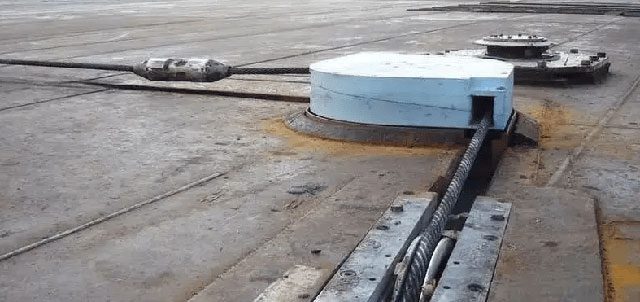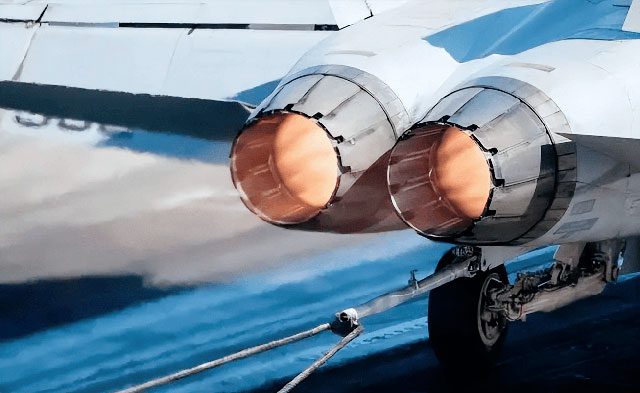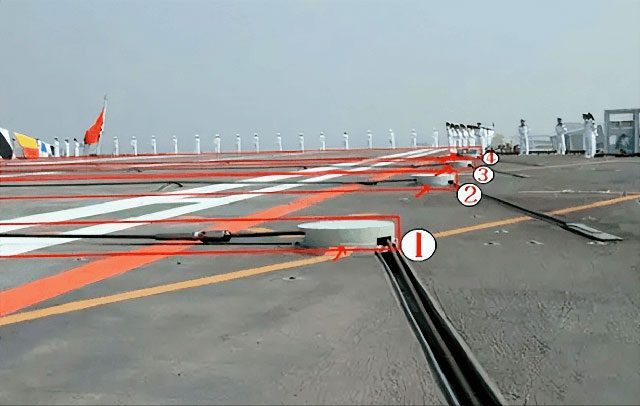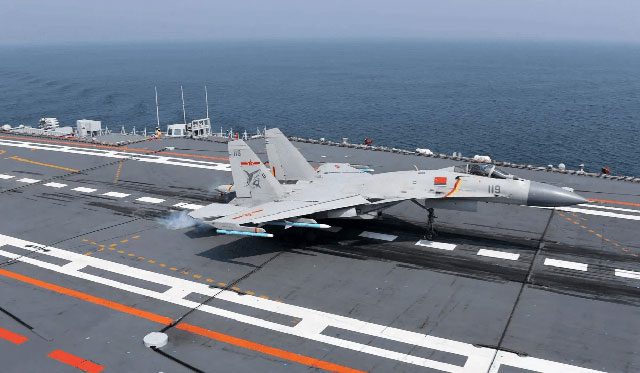When an aircraft lands on an aircraft carrier, it requires a cable to help bring it to a stop; otherwise, it could easily run off the deck.
The most expensive cable in the world is not made of gold or silver; in fact, it is more expensive than the most expensive gold cables available today. It is the arrestor cable used on aircraft carriers to assist landing aircraft in coming to a complete stop in an instant – capable of halting a 20-ton fighter jet in just 3 seconds.
The arrestor cable is not only costly due to its materials but also because of its crucial role and the advanced technology involved in its manufacturing.
This arrestor cable costs up to 1.5 million USD and is crafted from advanced high-tech materials and cutting-edge scientific equipment. Additionally, only three countries in the world can produce this expensive cable, specifically China, the United States, and Russia.
Why is this cable so expensive?
As a specialized device installed on aircraft carriers, the arrestor cable allows landing aircraft to decelerate quickly and safely, completing the landing over a very short distance. This type of cable is made from special steel, known for its strength, ductility, and high tensile strength, enabling it to rapidly dissipate the enormous kinetic energy generated by high-speed landing aircraft.

This cable helps aircraft land and decelerate quickly and safely.
On the flight deck of the aircraft carrier, four arrestor cables are installed to form a barrier. When a fighter jet is preparing to land on the carrier, its average landing speed is around 200 km/h, and its landing weight is 20 tons. If the tail hook fails to catch the arrestor cable, an accident could occur.
Stopping and landing an aircraft on an aircraft carrier within a few hundred meters is a significant challenge due to the impact of the aircraft’s speed and weight. On a ground airport runway, an aircraft needs to roll several kilometers to reduce its speed to zero. However, on an aircraft carrier, the support from the arrestor cable is vital to achieving this goal.

When an aircraft on the carrier is ready to land, it does not use its nose to touch the arrestor cable; instead, it will drop the tail hook first. When the aircraft touches the deck, the tail hook locks onto the arrestor cable. The significant pull of the arrestor cable will stop the aircraft in 3 seconds.
Therefore, the requirements for manufacturing this type of cable are very high, as China, the United States, and Russia can produce high-quality arrestor cables, while other countries must import them.
When the aircraft on the carrier prepares to land, it will drop the tail hook first. Upon touching the deck, the tail hook will lock onto the arrestor cable. The strong pull of the arrestor cable will halt the aircraft in 3 seconds.
If there is no arrestor cable or if the landing is inaccurate, the pilot needs to increase the aircraft’s altitude, circle back, and attempt to land again. However, making an additional landing increases the risk of an accident, making an accurate landing with the arrestor cable the best choice.

On the flight deck of the aircraft carrier, four arrestor cables are installed to form a barrier.
The length of the arrestor cable currently installed on aircraft carriers is approximately 15 meters. Typically, four arrestor cables are installed on the carrier, each spaced about 12 meters apart. The second and third cables usually have a pulling force of over 100 tons, sufficient to stop aircraft weighing several tens of tons.
When the aircraft aims for the carrier to land, it will drop the tail hook first. Upon touching the deck, the tail hook will target the arrestor cable to quickly engage and hook onto it. The hydraulic system will absorb the powerful kinetic energy of the aircraft, allowing it to decelerate over a short distance and land safely.
After the aircraft successfully stops, the arrestor cable and tail hook will disconnect, preparing for the next landing. In emergency situations, if the arrestor cable does not connect successfully, another arrestor cable and a barrier net will be deployed to stop the aircraft.

The arrestor system not only includes the cable but also other supporting devices such as the hydraulic system to absorb kinetic energy, the cable reset device, and the aircraft barrier net. When the aircraft touches the arrestor cable, the hydraulic system compresses and absorbs energy from the aircraft, helping it decelerate rapidly and safely.
Manufacturing arrestor cables is a challenging task. This is not just a high-tension cable but a complete set of equipment, including stop devices, hydraulic cushioning devices, cable reset devices, and aircraft barrier nets. All these components work together to create a system that ensures safe landings for aircraft.
The arrestor cable, though modest in appearance, plays an extremely important role in helping aircraft stop on the flight deck of an aircraft carrier. The technology and experience required to manufacture arrestor cables demand precision and expertise, ensuring the safe and effective takeoff and landing of aircraft on the carrier.


















































